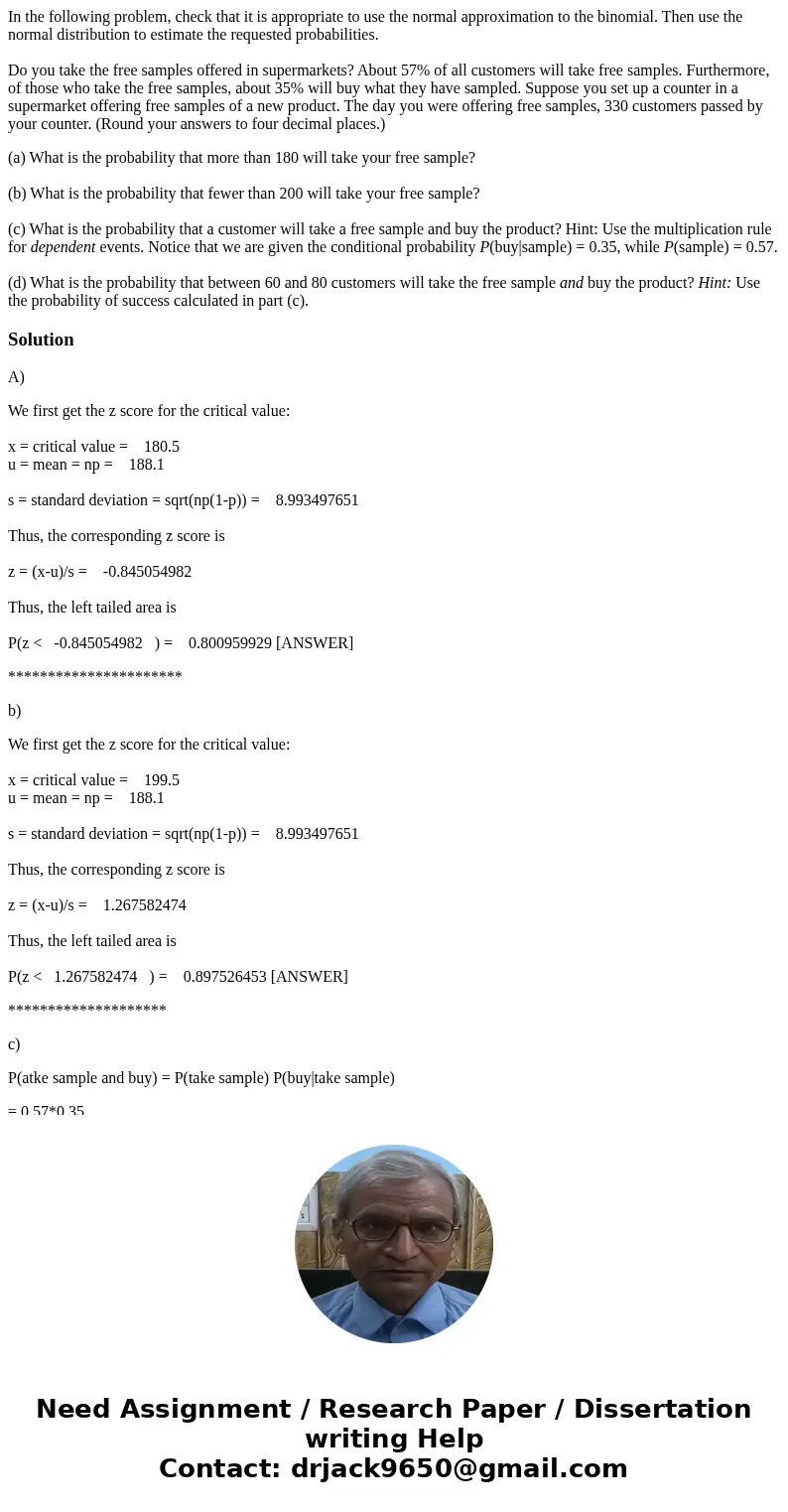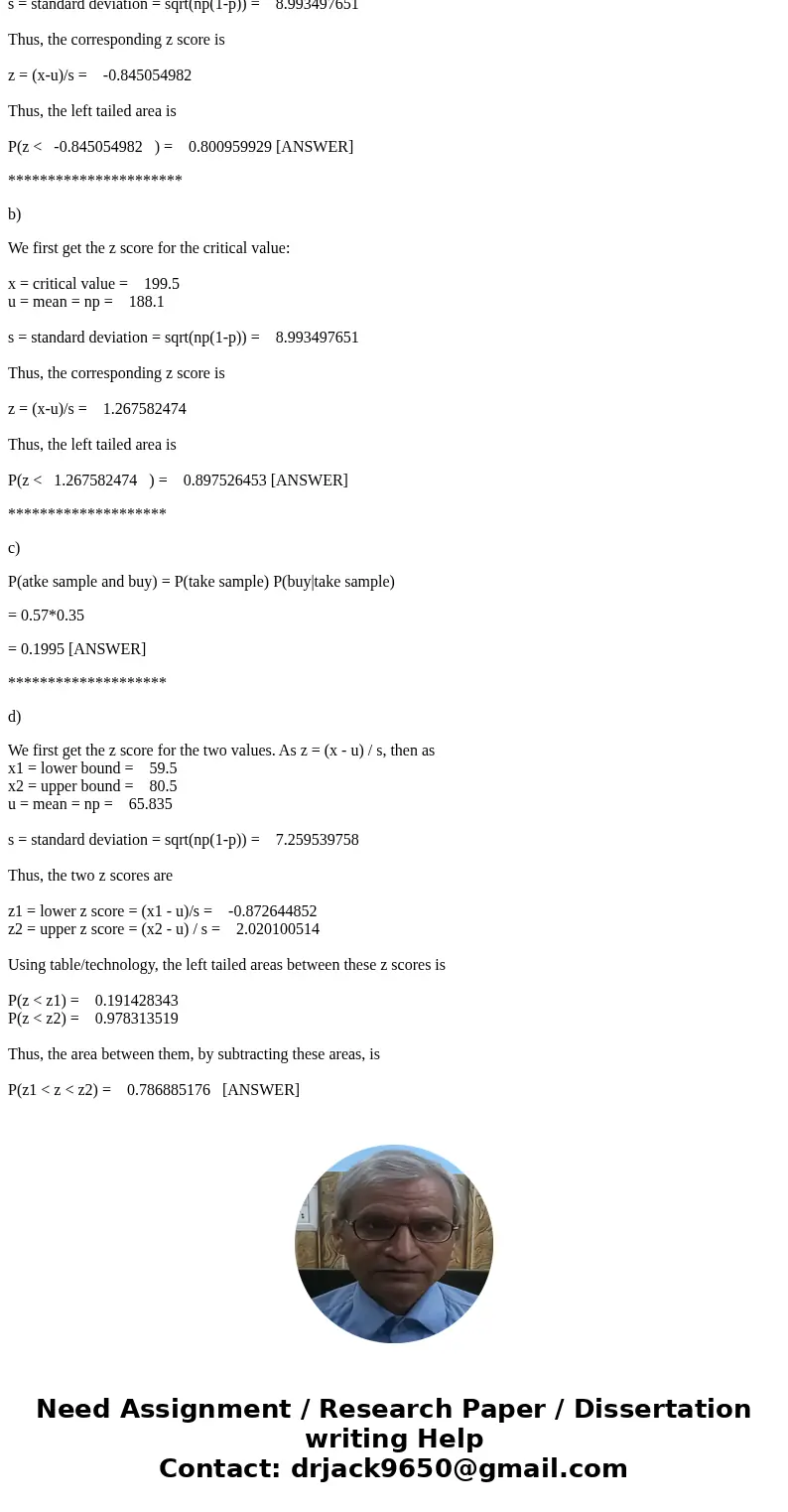In the following problem check that it is appropriate to use
In the following problem, check that it is appropriate to use the normal approximation to the binomial. Then use the normal distribution to estimate the requested probabilities.
Do you take the free samples offered in supermarkets? About 57% of all customers will take free samples. Furthermore, of those who take the free samples, about 35% will buy what they have sampled. Suppose you set up a counter in a supermarket offering free samples of a new product. The day you were offering free samples, 330 customers passed by your counter. (Round your answers to four decimal places.)
(a) What is the probability that more than 180 will take your free sample?
(b) What is the probability that fewer than 200 will take your free sample?
(c) What is the probability that a customer will take a free sample and buy the product? Hint: Use the multiplication rule for dependent events. Notice that we are given the conditional probability P(buy|sample) = 0.35, while P(sample) = 0.57.
(d) What is the probability that between 60 and 80 customers will take the free sample and buy the product? Hint: Use the probability of success calculated in part (c).
Solution
A)
We first get the z score for the critical value:
x = critical value = 180.5
u = mean = np = 188.1
s = standard deviation = sqrt(np(1-p)) = 8.993497651
Thus, the corresponding z score is
z = (x-u)/s = -0.845054982
Thus, the left tailed area is
P(z < -0.845054982 ) = 0.800959929 [ANSWER]
**********************
b)
We first get the z score for the critical value:
x = critical value = 199.5
u = mean = np = 188.1
s = standard deviation = sqrt(np(1-p)) = 8.993497651
Thus, the corresponding z score is
z = (x-u)/s = 1.267582474
Thus, the left tailed area is
P(z < 1.267582474 ) = 0.897526453 [ANSWER]
********************
c)
P(atke sample and buy) = P(take sample) P(buy|take sample)
= 0.57*0.35
= 0.1995 [ANSWER]
********************
d)
We first get the z score for the two values. As z = (x - u) / s, then as
x1 = lower bound = 59.5
x2 = upper bound = 80.5
u = mean = np = 65.835
s = standard deviation = sqrt(np(1-p)) = 7.259539758
Thus, the two z scores are
z1 = lower z score = (x1 - u)/s = -0.872644852
z2 = upper z score = (x2 - u) / s = 2.020100514
Using table/technology, the left tailed areas between these z scores is
P(z < z1) = 0.191428343
P(z < z2) = 0.978313519
Thus, the area between them, by subtracting these areas, is
P(z1 < z < z2) = 0.786885176 [ANSWER]


 Homework Sourse
Homework Sourse